The Glory of Golden Oyster Mushrooms
Violet the Dog encounters critters, and Kermit the Frog interprets...
This week has been exquisite for walking. So much to see and learn. Violet and I went out a little bit later over the weekend.
The highlight was the absolute beauty of the Golden Oyster Mushrooms below.
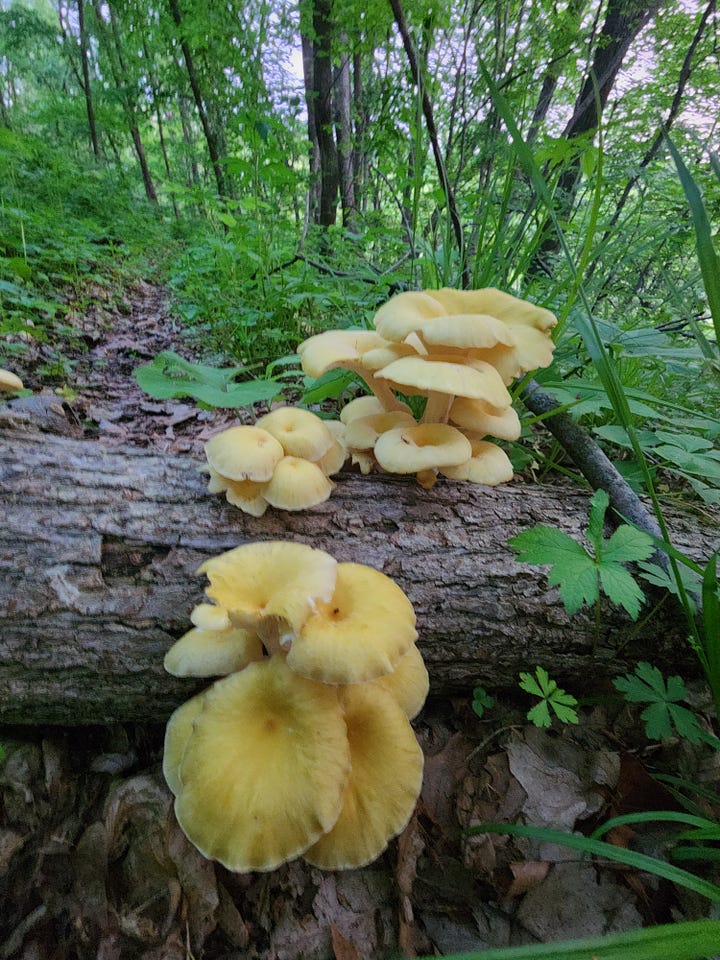
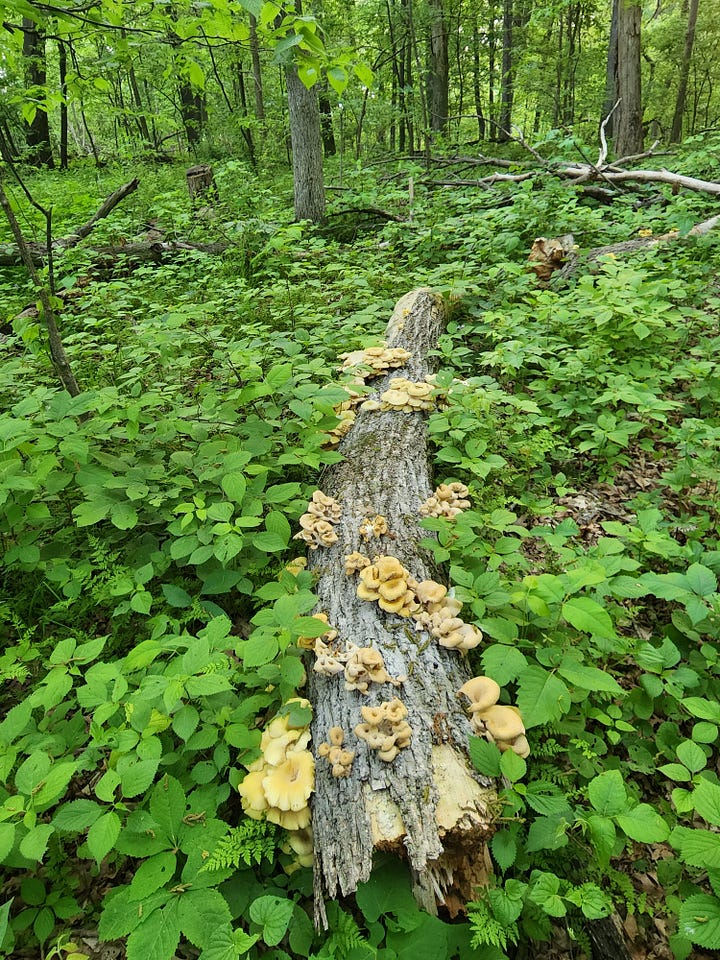
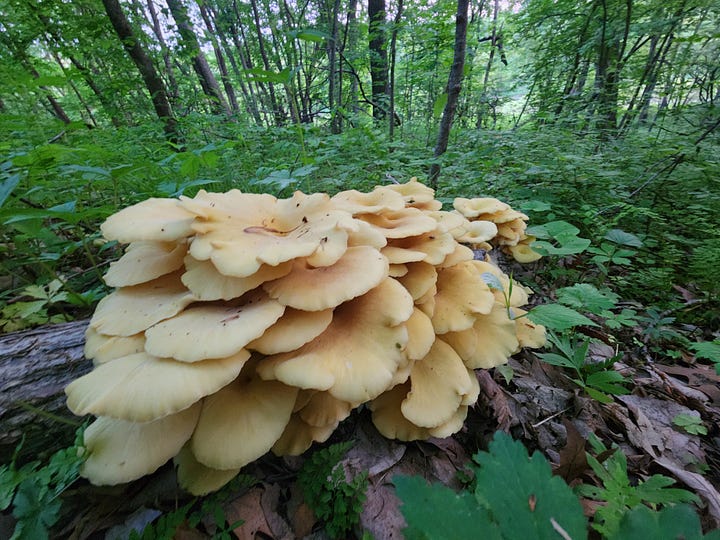
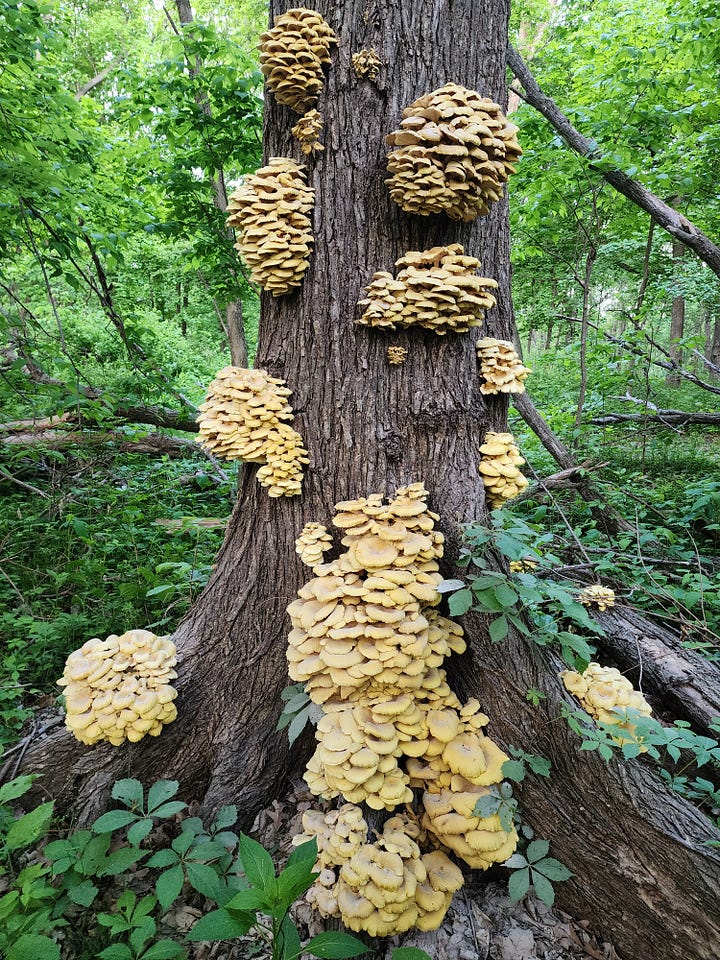
After I keyed them out (hopefully correctly) much to my surprise, I learned that these mushrooms aren’t native to North America. They are native to subtropical hardwood forests of eastern Russia, northern China, and Japan and have long been considered an important culinary mushroom across Asia.
The first sightings in North America were in 2012, and they can now be considered a naturalized and invasive species. They have been observed in Delaware, Illinois, Iowa, Maryland, Massachusetts, Michigan, Minnesota, New York, Ohio, Pennsylvania, and Wisconsin. Because they are so beautiful, I didn’t harvest any. Now that I know they are invasive though, I think I will gobble them up. My friend John Mertz, a former conservation officer for the DNR, tells me that you can fry them in butter like morels, and they are delicious. They are high in antioxidants too.
Speaking of morels, I found one early Sunday morning, and we fried it in butter and ate it for breakfast. If you have never eaten any morels, know that the flavor is beyond description.
I’m sad to say that I am out in the woods more than almost anyone I know, but rarely find morels. At least I found one this year!
Check out this video. Violet the Dog encounters a deer. Notice the deer's “blow sound” when it sees Violet the Dog approaching. This is a warning to other deer that danger is near and for them all to flee. Notice how Violet really isn’t interested in pursuing the deer and says so by wagging her tail. Notice how she looks back to me for affirmation. As we discussed last week, the white tail of the deer is an adaptation that, when it flashes, predators know that the chase will require much energy and will likely result in failure for the predator. So no one wastes energy in pursuit.
Violet the Dog and I noticed the animal ahead of us on the path at about the same time. I first thought it might be a beaver, as I have seen beaver at this spot before. It was only as it entered the taller grass that I could see it was a raccoon, with the flash of white on its tail. Again, the white tail told Violet the Dog that she had already been spotted, and the chase was over. Violet didn’t seem interested really, but again looks back at me for affirmation.
Good dog!
Anyone know who this plant this is? I spotted it about a week ago.
Frog love was glorious at the pond a couple of weeks ago. Listen please:
And by May 21, it was over. Here you are:
Whenever I hear frogs, I wish I could speak frog. While I can’t, we all have a friend who can interpret frog for us, Kermit the Frog.
Kermit tells us that the most important thing for all of us to remember is love is love.
I’m a member of the Iowa Writers Collaborative. Please sample the talents of my fellow collaborative members. If you can afford to be a paid subscriber, that would be great. If not, the vast majority of content is free. And here is a link to the Iowa Podcasters’ Collaborative, should you be interested. Check out my Substack Deep Midwest: Politics and Culture if you aren’t already a subscriber. My Iowa Revolution podcast with award-winning broadcaster Spencer Dirks can be found here.
After spending nearly 20 years in radio, I know a little about public relations, and have started a small consulting group and associated Substack called Better PR. You might be interested in what I have to share there. Thanks!

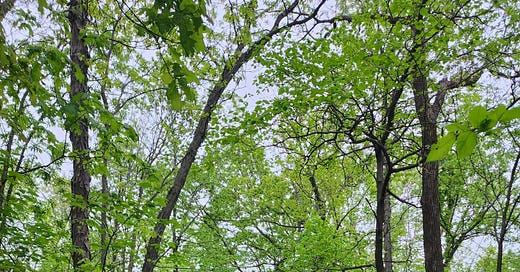



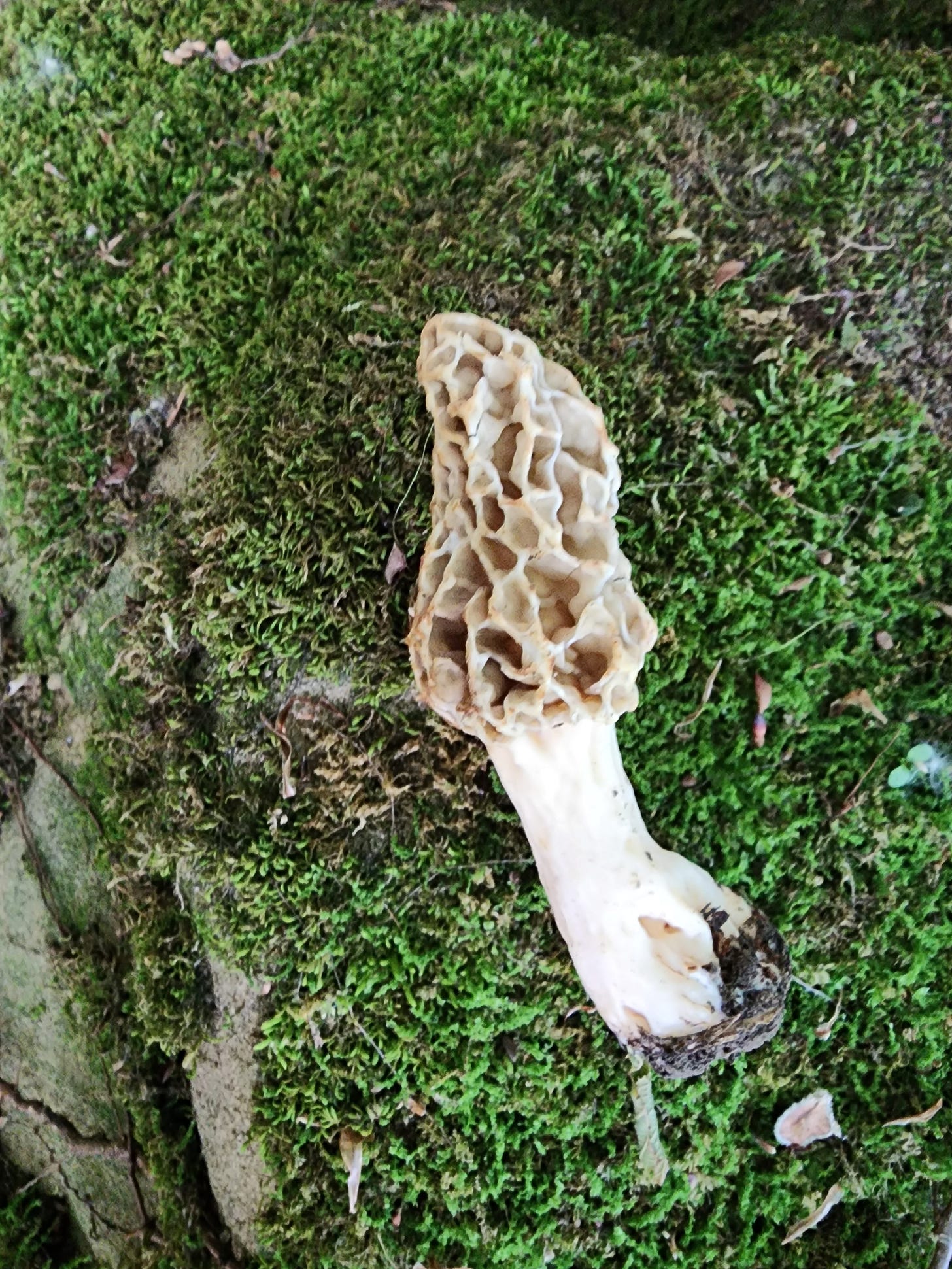
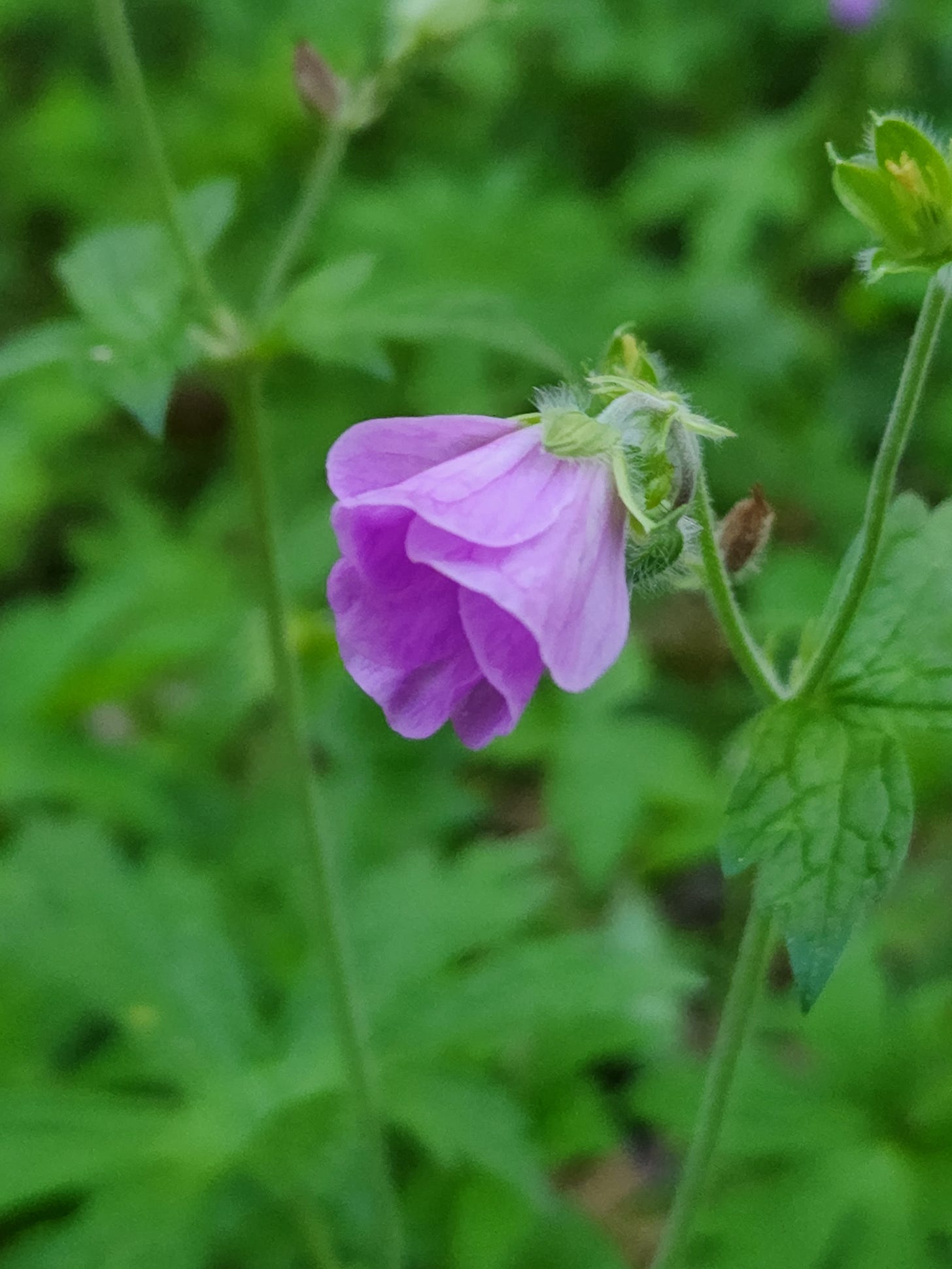
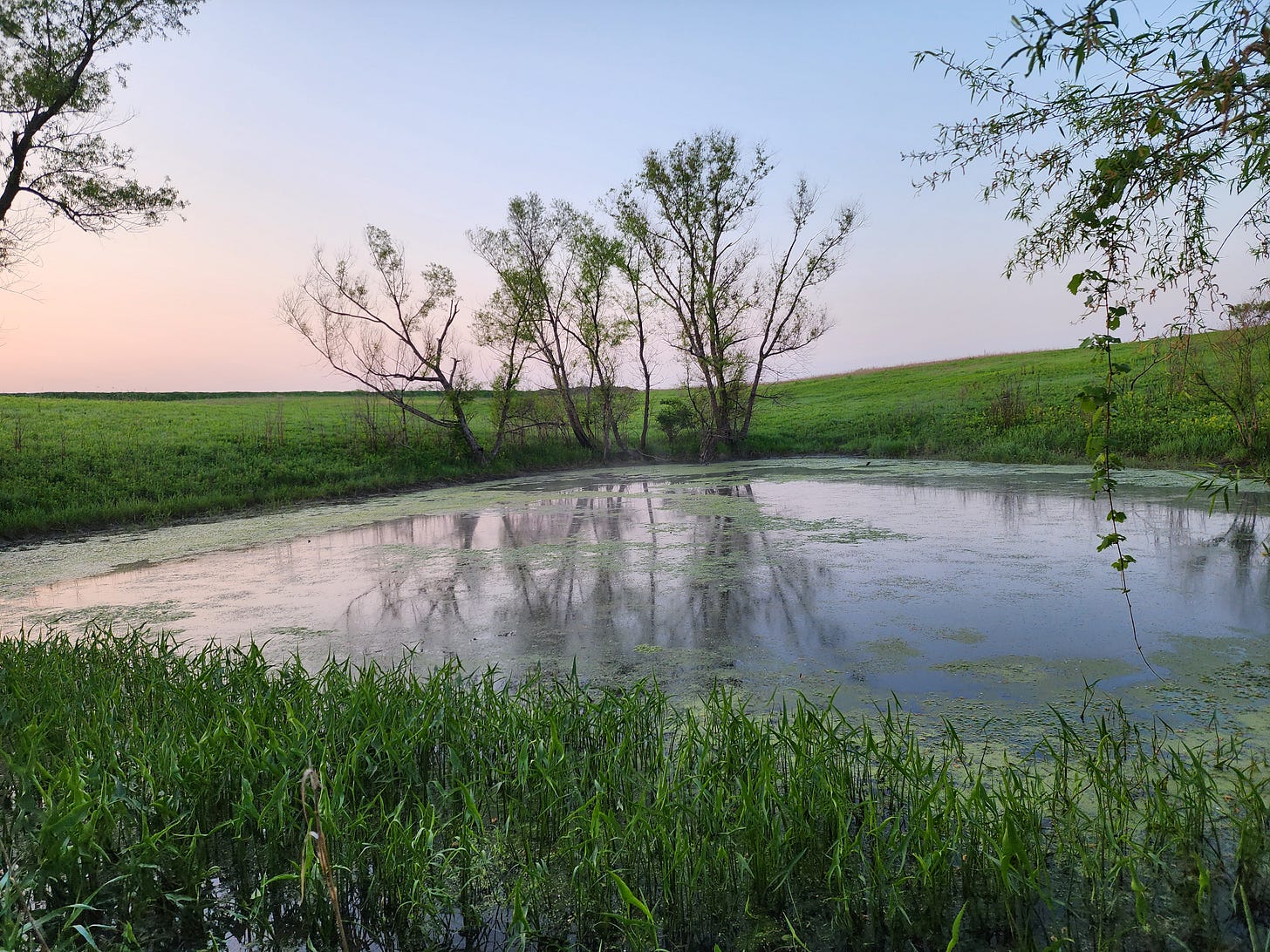
The blossom on the plant you're asking about looked a lot like our hollyhock blossoms. But PlantNet says it's likely a Wood crane's-bill, which appears to be in the Wild Geranium family. Other plant ID apps may give you different results.